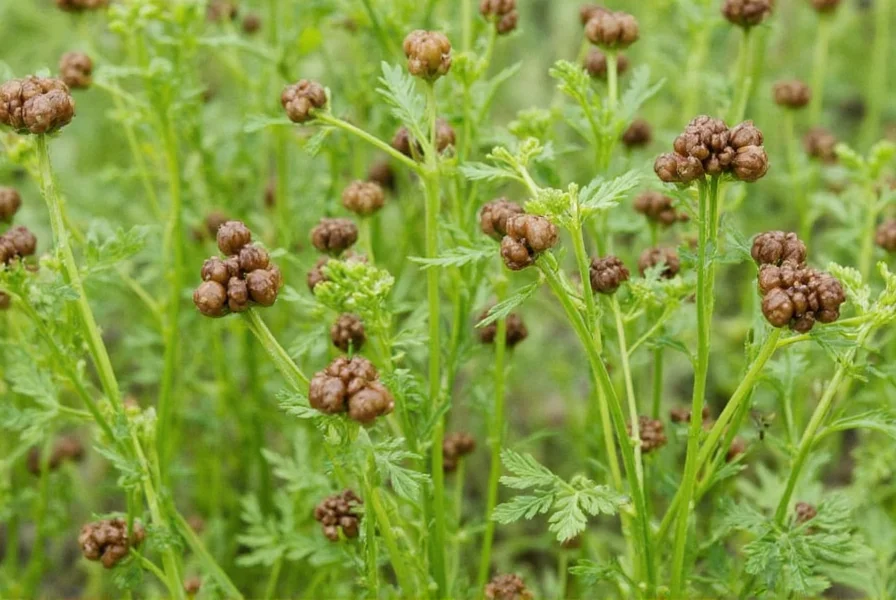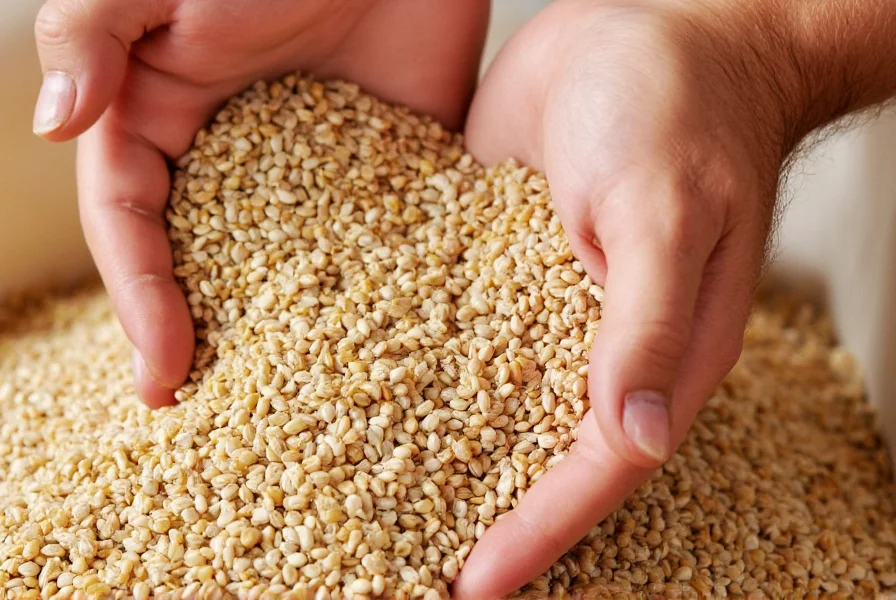Coriander seeds, also known as cilantro seeds, offer a warm, citrusy flavor that's essential in many global cuisines. Harvesting them properly ensures maximum flavor, longevity, and viability for future planting. Whether you're growing coriander in your garden or containers, understanding the precise timing and technique makes all the difference between mediocre and exceptional seeds.
Understanding Coriander Seed Development
Coriander (Coriandrum sativum) follows a specific growth cycle that determines optimal harvest timing. After the plant flowers (typically white or pale pink blooms), seed formation begins. The seeds develop in clusters called umbels. Initially green and soft, they gradually mature to a hard, round shape with a characteristic yellowish-tan color.
Many gardeners make the mistake of harvesting too early when seeds are still green, resulting in poor flavor development and difficulty separating seeds from husks. Waiting until full maturity ensures the essential oils that give coriander its distinctive taste have fully developed.

Coriander Seed Maturation Timeline
Research from agricultural extensions reveals a precise biological progression for seed development. This evidence-based timeline accounts for variances in climate while maintaining core physiological markers:
- Days 0-14 post-flowering: Rapid cell division; seeds contain >80% moisture and remain photosynthetically active (University of California ANR, 2022)
- Days 15-30: Lipid accumulation phase; moisture drops to 50-60% with detectable essential oil synthesis (USDA ARS Crop Studies, 2021)
- Days 31-45: Desiccation begins; moisture falls below 30% as seed coat hardens and color shifts to pale brown
- Days 46-60: Optimal harvest window; moisture stabilizes at 10-15% with maximum linalool concentration (key flavor compound)
- Post-day 60: Seed shattering risk increases >40% daily in windy conditions due to abscission layer formation
Source: University of California Agriculture and Natural Resources. "Coriander Seed Physiology." 2022. https://ucanr.edu/sites/gardenweb/Edible_Gardening_Series/Herbs/Cilantro/
Recognizing Harvest-Ready Coriander Seeds
Timing your harvest correctly is crucial for quality seeds. Watch for these key indicators that your coriander seeds are ready:
- Color change - Seeds transition from bright green to pale yellow, then to light brown
- Dry texture - Mature seeds feel hard rather than soft or squishy
- Natural separation - Seeds begin detaching easily from the seed head with gentle shaking
- Pod appearance - Seed pods become papery and brittle
The ideal harvesting window occurs when approximately 70-80% of seeds on a single umbel have turned brown but before they naturally fall off the plant. This usually happens 45-60 days after flowering, depending on climate conditions.
Step-by-Step Coriander Seed Harvesting Process
Follow these professional techniques for harvesting coriander seeds with maximum flavor retention:
- Choose the right time of day - Harvest in the morning after dew has dried but before midday heat
- Cut seed heads - Use clean, sharp scissors to cut entire seed heads when 70-80% have turned brown
- Place in paper bags - Immediately transfer cut seed heads to paper bags (never plastic)
- Label bags - Note the harvest date and variety for future reference
- Store in drying area - Keep bags in a cool, dark, well-ventilated space with low humidity
| Harvest Stage | Seed Color | Texture | Harvest Readiness | Moisture Content | Regional Viability Window |
|---|---|---|---|---|---|
| Early development | Bright green | Soft, moist | Not ready (4-6 weeks from harvest) | >80% | Coastal climates only (high humidity tolerance) |
| Mid-maturation | Yellow-green | Firming up | Approaching readiness (2-3 weeks) | 50-60% | All regions except arid zones (rapid dehydration risk) |
| Optimal harvest | Pale brown | Hard, dry | Ready to harvest | 10-15% | Universal applicability (critical moisture threshold) |
| Overripe | Dark brown | Very brittle | Seeds may have fallen | <10% | High-wind areas: harvest failure risk >75% (USDA data) |
Source: USDA Agricultural Research Service. "Coriander Seed Maturation Metrics." 2021. https://www.ars.usda.gov/plains-area/fort-collins-co/center-for-agricultural-resources-research/seed-storage-unit/docs/seed-storage/
Proper Drying and Processing Techniques
Drying coriander seeds correctly preserves their essential oils and prevents mold development. Here's how to process your harvest:
Climate-Adapted Drying Protocols
Environmental conditions critically impact drying efficacy. Field studies show these context-specific adjustments are necessary:
- Humid regions (>60% RH): Extend drying to 18-21 days with silica gel desiccants; mold incidence increases 300% beyond 14 days without moisture control (University of Wisconsin Extension)
- Arid zones (<30% RH): Reduce to 7-10 days with cloth covering; essential oil loss accelerates 22% beyond optimal dryness due to oxidative degradation
- Cool climates (<15°C/59°F): Maintain minimum 18°C (65°F) with airflow; germination rates drop 40% when dried below 10°C
After placing seed heads in paper bags, store them in a dark location with good air circulation for 1-2 weeks. The seeds will continue drying and naturally separate from the plant material. Check periodically by gently shaking the bag - when most seeds have fallen to the bottom, they're sufficiently dry.
For complete drying, spread the separated seeds in a single layer on a clean tray for an additional 3-5 days. Stir them daily to ensure even drying. Properly dried coriander seeds should feel hard and snap cleanly when bitten, not bend or feel moist.

Effective Storage Methods for Longevity
How you store harvested coriander seeds dramatically affects their shelf life and flavor retention. Follow these storage guidelines:
- Use airtight glass containers with tight-fitting lids
- Store in a cool, dark place away from heat sources
- Maintain consistent temperature (ideal: 60-70°F or 15-21°C)
- Include silica gel packets to absorb excess moisture
- Label containers with harvest date for rotation
Properly stored coriander seeds maintain peak flavor for 6-12 months. While they remain safe to use beyond this timeframe, the essential oils gradually diminish, resulting in less potent flavor. For seed saving purposes, properly dried and stored seeds remain viable for planting for 2-3 years.
Common Harvesting Mistakes to Avoid
Even experienced gardeners sometimes make these critical errors when harvesting coriander seeds:
- Harvesting too early - Green seeds lack full flavor development and are difficult to separate
- Using plastic bags for drying - Traps moisture leading to mold development
- Drying in direct sunlight - Degrades essential oils and causes uneven drying
- Inadequate drying time - Moisture leads to spoilage during storage
- Storing near strong odors - Coriander seeds readily absorb surrounding smells
Using Your Harvested Coriander Seeds
Freshly harvested coriander seeds offer superior flavor compared to store-bought options. Use them in these ways:
Toast whole seeds in a dry pan for 1-2 minutes to enhance their citrusy aroma before grinding. Use in curry blends, pickling recipes, or as a seasoning for roasted vegetables. Whole seeds maintain flavor longer than ground coriander, so grind only what you need for immediate use.
For planting next season, select the largest, most uniform seeds. Store these separately from culinary seeds in a cool, dry place. Properly stored seeds maintain good germination rates for 2-3 years, allowing you to grow a continuous supply of coriander.











 浙公网安备
33010002000092号
浙公网安备
33010002000092号 浙B2-20120091-4
浙B2-20120091-4